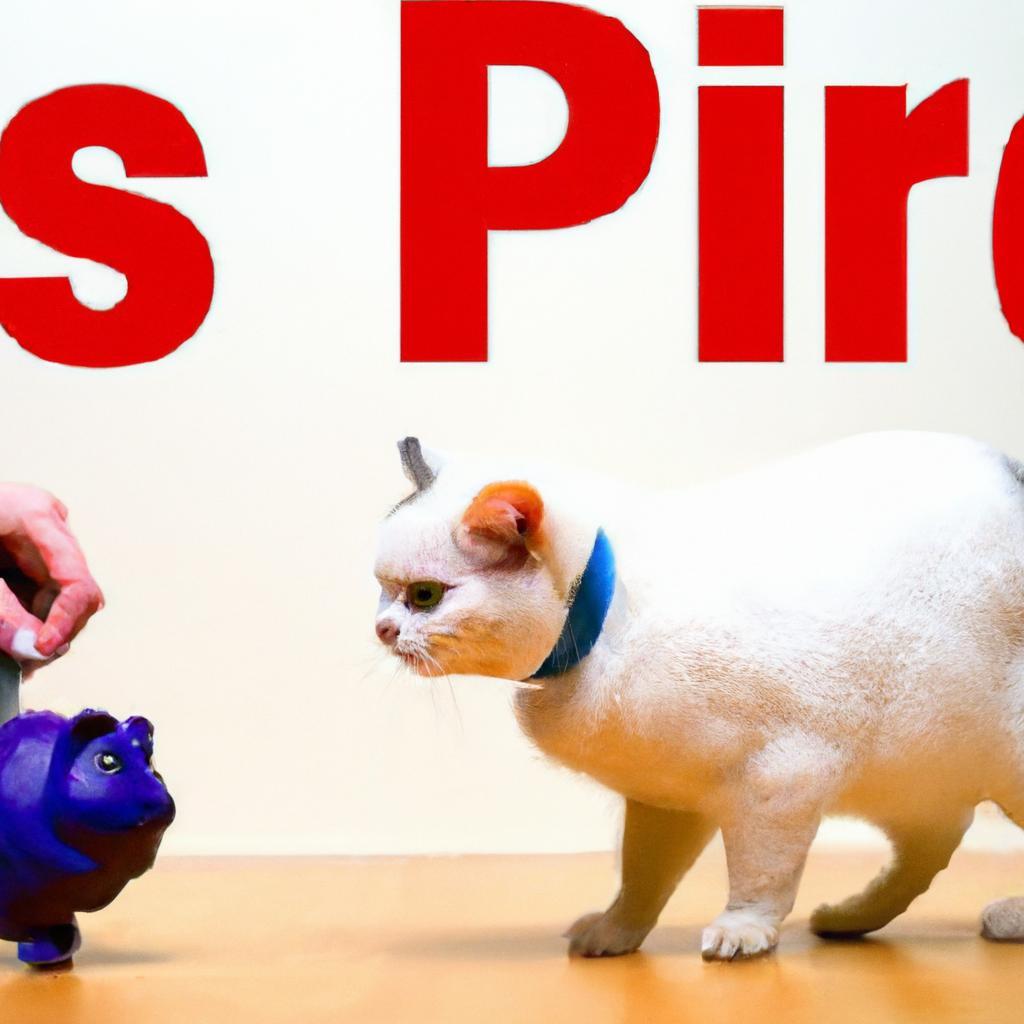When Sarah decided to adopt a pet, she envisioned a loyal dog or a playful cat. However, after researching costs, she discovered the hidden expenses: food, grooming, and vet visits. Then, she stumbled upon hamsters. With a modest cage, minimal food, and occasional bedding changes, they proved to be budget-friendly companions. Sarah found joy in their antics without breaking the bank. If you’re considering a pet but worried about costs, think small—hamsters might just be the perfect, affordable choice for companionship!
Contents
- Understanding the True Costs of Pet Ownership
- Evaluating Initial and Ongoing Expenses for Different Pets
- Exploring Budget-Friendly Pet Options for Every Lifestyle
- Maximizing Value: Tips for Affordable Pet Care and Maintenance
- Q&A
Understanding the True Costs of Pet Ownership
When considering the financial implications of pet ownership, it’s essential to look beyond the initial purchase price. The ongoing expenses can accumulate quickly, making some pets far more costly than they appear at first glance. Factors such as food, grooming, veterinary care, and supplies can significantly impact your budget. Understanding these costs is crucial for making an informed decision about which pet might be the most economical choice for your lifestyle.
Food is one of the most significant recurring expenses associated with pet ownership. Different animals have varying dietary needs, which can influence overall costs. For instance, while a small dog may require less food than a larger breed, the quality of the food can also affect the price. Consider the following when evaluating food costs:
- Type of pet: Dogs, cats, and small mammals all have different dietary requirements.
- Quality of food: Premium brands may offer better nutrition but come at a higher price.
- Special dietary needs: Some pets may require specialized diets due to health issues, increasing costs.
Veterinary care is another critical aspect of pet ownership that can lead to unexpected expenses. Routine check-ups, vaccinations, and preventive medications are necessary to keep your pet healthy. Additionally, unforeseen medical emergencies can arise, leading to significant financial strain. It’s wise to consider the following:
- Routine care: Annual check-ups and vaccinations can add up over time.
- Emergency care: Unexpected health issues can lead to costly vet bills.
- Insurance: Investing in pet insurance may help mitigate some of these costs.
Lastly, don’t forget about the costs associated with grooming and supplies. Some pets require regular grooming, which can be a recurring expense, while others may need minimal upkeep. Additionally, supplies such as bedding, toys, and training materials can contribute to the overall cost of ownership. When assessing these expenses, consider:
- Grooming frequency: Long-haired breeds may require more frequent grooming than short-haired ones.
- Essential supplies: Items like leashes, collars, and litter boxes are necessary for pet care.
- Training costs: Professional training classes can enhance your pet’s behavior but may require a financial commitment.
Evaluating Initial and Ongoing Expenses for Different Pets
When considering the financial implications of pet ownership, it’s essential to break down both initial and ongoing expenses. The initial costs can vary significantly depending on the type of pet you choose. For instance, adopting a dog from a shelter may involve a modest adoption fee, while purchasing a purebred puppy can set you back several hundred to thousands of dollars. In contrast, small pets like hamsters or guinea pigs typically have lower upfront costs, often requiring only a small adoption fee and basic supplies such as a cage and bedding.
Ongoing expenses are another critical factor to evaluate. Dogs, for example, require regular veterinary check-ups, vaccinations, and preventive medications, which can add up quickly. Additionally, food, grooming, and training classes contribute to the overall cost. On the other hand, cats may have lower food costs and grooming needs, but they still require regular vet visits and litter supplies. Small pets, while generally cheaper to maintain, still incur costs for food, bedding, and occasional vet visits, particularly if they develop health issues.
It’s also important to consider the lifespan of the pet when evaluating long-term expenses. Dogs and cats can live for 10 to 20 years, meaning their cumulative costs can be substantial over time. In contrast, smaller pets like hamsters or gerbils have shorter lifespans, typically ranging from 2 to 5 years, which can make them less expensive in the long run. However, the emotional investment and the potential need for replacement pets should also be factored into your decision.
Ultimately, the cheapest pet is not solely determined by initial and ongoing expenses but also by the level of care and commitment you are willing to provide. **Consider your lifestyle, budget, and the time you can dedicate to a pet** before making a decision. By thoroughly evaluating these factors, you can choose a pet that fits your financial situation while ensuring a happy and healthy life for your new companion.
Exploring Budget-Friendly Pet Options for Every Lifestyle
When considering a pet that fits your budget, it’s essential to evaluate not only the initial purchase price but also the ongoing costs associated with care. Some pets require minimal investment, making them ideal for those on a tight budget. **Small mammals** such as hamsters, gerbils, and guinea pigs often come with lower price tags and relatively inexpensive care needs. Their habitats can be set up for under $100, and their food and bedding are affordable, making them a great choice for families or individuals looking to keep costs down.
Fish are another excellent option for budget-conscious pet owners. Setting up a basic aquarium can be done for a reasonable price, especially if you start with a smaller tank. **Freshwater fish** are typically less expensive than their saltwater counterparts, and their maintenance costs are generally lower. With proper care, fish can thrive for years, providing companionship without the hefty price tag associated with larger pets.
If you’re looking for a pet that offers a bit more interaction, consider adopting a **cat** or a **dog** from a local shelter. Adoption fees are often minimal, and many shelters include vaccinations and spaying/neutering in the cost. While cats tend to have lower ongoing expenses compared to dogs, both can be budget-friendly if you focus on basic care. Simple toys, homemade treats, and regular vet check-ups can keep costs manageable while ensuring your furry friend stays healthy and happy.
Lastly, if you’re open to less conventional pets, consider **reptiles** like leopard geckos or corn snakes. These animals often have lower food costs and require less frequent feeding than traditional pets. Their habitats can be set up with a one-time investment in a terrarium and heating elements, and they typically have fewer health issues, which can save you money on veterinary bills. By choosing the right pet for your lifestyle and budget, you can enjoy the companionship of an animal without breaking the bank.
Maximizing Value: Tips for Affordable Pet Care and Maintenance
When considering the financial aspects of pet ownership, it’s essential to explore ways to minimize costs while ensuring your furry friend receives the best care possible. One effective strategy is to prioritize preventive care. Regular veterinary check-ups, vaccinations, and dental cleanings can help catch health issues early, potentially saving you from costly treatments down the line. Additionally, keeping your pet at a healthy weight through proper diet and exercise can prevent obesity-related conditions that often require expensive medical interventions.
Another way to keep pet care affordable is to take advantage of community resources. Many local animal shelters and veterinary clinics offer low-cost spay/neuter programs, vaccination clinics, and wellness days. These events can significantly reduce your expenses while providing essential services for your pet. Furthermore, consider joining pet owner groups on social media or community forums where you can share tips, resources, and even find discounts on pet supplies.
Choosing the right food can also make a substantial difference in your overall pet care budget. While premium brands may seem appealing, they often come with a hefty price tag. Instead, look for **high-quality, affordable alternatives** that meet your pet’s nutritional needs without breaking the bank. Buying in bulk or opting for store-brand products can also lead to significant savings. Just be sure to read the labels and consult with your veterinarian to ensure your pet is getting a balanced diet.
Lastly, consider DIY solutions for grooming and maintenance. Professional grooming can be costly, but with a little practice, you can learn to groom your pet at home. Invest in basic grooming tools and watch online tutorials to master the techniques. Additionally, regular brushing and bathing can keep your pet looking great and reduce the frequency of professional grooming visits. By taking these steps, you can enjoy the companionship of your pet without the financial strain.
Q&A
-
What is the cheapest pet to own?
The cheapest pets to own are typically small animals like hamsters, guinea pigs, or fish. These pets generally have lower initial costs and require less expensive ongoing care compared to larger animals.
-
What are the ongoing costs associated with low-cost pets?
Ongoing costs for low-cost pets include food, bedding, toys, and vet care. While these pets are cheaper to maintain, it’s essential to budget for their needs to ensure a healthy and happy life.
-
Are there any hidden costs when owning a cheap pet?
Yes, hidden costs can include enclosure setup, healthcare, and emergency expenses. It’s crucial to consider these factors when determining the overall affordability of a pet.
-
Can I find low-cost pets for adoption?
Absolutely! Many shelters and rescue organizations offer low-cost adoption fees for small pets. Adopting not only saves you money but also provides a loving home to an animal in need.
while the allure of a low-cost pet is undeniable, it’s essential to consider the long-term commitment and care each animal requires. Choose wisely, ensuring your new companion brings joy without financial strain. Your perfect pet awaits!

大家好,我是彼得潘,專業的手法身體治療師。我喜歡探索和研究各種主題,並透過與人工智慧的合作分享專業、實用、有趣的文章。我們定期進行人工審核,以確保內容的準確性。如果您發現文章中有任何不準確的地方,請隨時與我們聯繫,我們會及時糾正。您可以透過 [email protected] 與我們聯繫。



